Mon Droit
&
Mes Libertés
Conseils Juridiques Gratuits
Nos articles sur le droit en France

Cours de l’or : le métal jaune est-il stable ?
Vous vous interrogez sur la fiabilité de l’or comme investissement ? Cet article plonge au cœur du métal jaune, évaluant sa…

RGPD et CNIL : bilan des 5 années de protection des données personnelles en France
Depuis mai 2018, la Commission Nationale de l’Informatique et des Libertés (CNIL) est responsable de l’application du Règlement Général sur…

L’importance de l’accompagnement juridique dans l’approbation et le dépôt de vos comptes annuels
Diriger une SARL, SA, ou SAS impose le respect d’obligations comptables. C’est notamment le cas en matière d’approbation et de…
![Les Modes de Garde après une Séparation [Présentation]](https://www.mondroitmeslibertes.fr/wp-content/uploads/2024/03/e678c121ce8376668e76805cbae1ecb4-768x432.jpg)
Les Modes de Garde après une Séparation [Présentation]
Les modes de garde en cas de séparation, c’est un sujet crucial pour kes parents. Vous cherchez des réponses simples…

Tout savoir sur le Registre National des Entreprises
Depuis le mois de janvier 2023, en France, le RNE vient se substituer aux autres registres répertoriant les informations des…

Quelles sont les mentions obligatoires sur une attestation d’hébergement ? À quoi sert-elle ?
L’établissement d’une attestation d’hébergement est une procédure courante, souvent requise dans diverses situations administratives, telles que l’obtention d’un visa, ou…
Avocats gratuits en ligne
Un conseil adapté à votre cas qui se fixe comme but votre défense, que vous soyez en phase de contentieux ou en phase de recours gracieux.
Le but recherché sera toujours de préserver vos intérêts avec la garantie d’un degré élevé de confidentialité et de discrétion des informations transmises.
Laissez-vous guider par notre expérience juridique
Nos rôles principaux sont l’aide et l’assistance juridique ainsi que le conseil adapté à votre situation.
Mon Droit & Mes Libertés vous dispense l’information et l’aide juridique par un avocat en ligne. Vous pouvez poser vos questions juridiques en ligne et avoir des réponses claires et précises.
Présentation du site
Le droit est omniprésent dans notre société actuelle. Pas de droit, pas de règles, pas de société, seulement un groupe d’humains à “l’état de nature”.
Prenons par exemple la tasse de café (ou de thé) que vous utilisez pendant que vous lisez cet article. Elle est issue d’un nombre impressionnant de règles juridiques (allant de la création/récupération des matériaux, l’assemblage, la mise vente, et pour finir l’achat pour enfin atterrir dans votre main).
Si vous n’êtes pas encore convaincus, vous pouvez ajouter à ce long processus menant à l’achat : les droits dont disposent chaque intermédiaire (personnes physiques mais aussi personnes morales), mais aussi un éventuel droit de propriété intellectuelle sur votre tasse pour peu qu’elle soit particulière. Je vous épargne le listing complet des potentiels droits en présence, vous l’aurez compris vous ne pouvez pas vivre en ignorant ce qui vous entoure.
Les achats, la consommation, les soldes, l’argent, la gloire, on remercie parfois le droit quand il nous apporte quelques satisfactions. Toutefois, qui dit règles à respecter, dit règles non respectées. Face à la conséquente somme de règles existantes, il peut arriver que certains individus (sciemment ou inconsciemment) se mettent à en enfreindre quelques unes. Ainsi, nous voici dans la partie moins plaisante (tout dépend pour qui) du droit, celle qui parle des litiges/problèmes/conflits entre les protagonistes et leurs droits respectifs ou avec l’Etat.
Or, comme nous l’avons dit précédemment, le droit est vaste, alors comment être certain de nos propres droits (et devoirs). De plus, si nous ne connaissons pas nos droits, comment les faire respecter ?
Par conséquent, ce site a pour vocation de vous fournir des informations pratiques utiles dans la vie de tous les jours. Ne prenez pas peur, la rédaction des articles ira dans ce sens. Ils ne contiendront pas de phrases complexes. Tout sera expliqué et même illustré au besoin par des exemples pertinents. Les articles ne s’attarderont pas sur des aspects théoriques pompeux mais veilleront à vous apporter au mieux les informations et astuces.
Vous trouverez donc sur ce site :
- Des articles vous permettant d’y voir plus clair lorsque vous avez un problème (juridique) afin que vous puissiez l’analyser pour mieux le résoudre.
- Des articles vous indiquant les procédures à suivre, vers qui aller, et comment faire, une fois votre problème identifié.
- Mais aussi des articles sur des droits que vous côtoyez de près sans pour autant les connaître. Et ce, afin d’améliorer votre quotidien ou étoffer votre culture.
Vous l’aurez compris, ce site s’adresse tant aux étudiants soucieux d’éclairer certains points ou parfaire leurs connaissances, qu’aux personnes voulant acquérir de la culture juridique ou souhaitant trouver des éléments de réponse à leurs problèmes.
Point important : ce site n’a pas pour but d’offrir du conseil personnalisé à des problèmes donnés. C’est un site informatif et gratuit.
En outre, ce site ne prétend pas remplacer le travail de professionnels du droit. En effet, ceux-ci sont spécialisés et peuvent personnaliser leurs conseils. De plus, ils sont indispensables dans certains cas et disposent de pouvoirs qui leurs sont réservés. Par conséquent, nous ne manquerons pas, dans nos articles, de préciser leur utilité et le cas échéant quand et comment y faire appel.
Nos domaines de compétence
Les droits de la personne
Distinction entre les actes d’administration et de disposition, La curatelle, La tutelle, Le choix du nom de famille, La procédure en changement de nom, La sauvegarde de justice, La mesure d’accompagnement judiciaire (MAJ), La mesure d’accompagnement social personnalisée (MASP), Le contrôle des comptes de gestion d’un majeur protégé, Le fonctionnement de l’état civil, Les mandataires de justice à la protection des majeurs (MJPM), Nullité d’un acte passé par un majeur protégé, Peut-on m’obliger à changer le prénom de mon enfant ?, Principes directeurs du régime de protection des majeurs.
Le droit pénal
Le casier judiciaire, Le déclenchement des poursuites par la victime, La comparution sur reconnaissance préalable de culpabilité (CRPC), La médiation pénale, L’orientation vers une structure sanitaire, sociale ou professionnelle, Les immunités familiales pénales, La prescription de l’action publique, La légitime défense, L’extinction de l’action publique, Le classement sans suite, Le cyberharcèlement, L’éloignement du conjoint violent, Les peines proposées en CRPC, Le déclenchement des poursuites par le parquet, Les alternatives aux poursuites, Les contrôles d’identité, Stupéfiants.
La maison
La sous-location, Le contrat de bail, La résiliation du contrat de bail, La répartition des travaux locatifs entre le bailleur et le locataire, Le bail verbal, Peut-on interdire les animaux dans une location ?, Tout ce qu’il faut savoir sur l’expulsion locative, Les obligations du locataire, L’état des lieux d’entrée et de sortie, Comment récupérer un local abandonné par son locataire, La liste des réparations à la charge des locataires, Domiciliation des personnes sans domicile stable, Distinction entre le domicile et la résidence, Le dépôt de garantie.
La santé
Comment consulter son dossier médical, L’interruption médicale de grossesse (IMG), La faute médicale, Les poursuites disciplinaires des professions médicales, La responsabilité médicale, Le droit à l’interruption volontaire de grossesse (IVG), Le régime de la responsabilité du défaut d’information, Le devoir d’information du médecin, L’aléa thérapeutique.
Le monde de la justice
Les juges de proximité, Les juges non professionnels, Les procureurs, La responsabilité civile et pénale des magistrats, La procédure disciplinaire des magistrats, Le juge des tutelles, Le juge de l’exécution (JEX), Le juge aux affaires familiales (JAF), Code déontologique des magistrats.
Nos spécialités juridiques diversifiées
Nous sommes en mesure de vous établir des devis précis gratuitement si vous souhaitez bénéficier de consultations plus approfondies, ou mieux encore, si vous désirez être représenté devant les autorités judiciaires et monter un dossier défendable devant la justice.
À titre d’exemple, notre avocat fiscaliste s’accorde plusieurs rôles pour les mêmes honoraires ce que vous ne trouveriez pas ailleurs. Parmi les rôles de l’avocat, ce dernier prend en charge toute négociation en faveur de son client à charge, fournit le conseil à notre clientèle, la documentation juridique nécessaire à démystifier les natures des entités commerciales, la précision et les implications fiscales de certains financements, ce qui fait aboutir à la compréhension approfondie du droit fiscal.
D’autre part, il est nécessaire pour comprendre le marasme de certaines fondations de bienfaisance, de certaines fiducies et d’autres outils de planification successorale de minimiser au maximum la facture d’impôt successoral qui pourrait par exemple mettre en faillite une entreprise familiale ou engendrer des problèmes d’ordre fiscal et financier pour les héritiers réservataires et les différents degrés successoraux.
Notre avocat fiscaliste analyse constamment l’évolution de la législation et vous conseille sur les impacts éventuels de cette même législation en cours, sur vos ressources personnelles ou sur la fiscalité de votre entreprise ; en amont et dans le même sens concernant nos avocats fiscalistes partenaires, certains sont spécialisés dans des branches générales du droit fiscal d’autres travaillent dans des sous spécialités comme la planification fiscale internationale, les organismes exonérés, les finances municipales, l’impôt général sur les sociétés, les litiges fiscaux ou encore la rémunération des dirigeants.
Par conséquent, ces spécialités diverses au sein de la même branche demandent de solides compétences analytiques ainsi que des compétences en mathématiques et en comptabilité, une appréciable communication tant à l’écrit qu’à l’oral ainsi qu’un sens aigu de pensée critique et d’improvisation.
Gratuité et rapidité de nos conseils
Nous mettons à votre disposition toute une base de connaissance : venez poser vos questions juridiques et découvrez les meilleurs conseils juridiques et solutions gratuites sans le moindre frais.
Nos spécialistes du droit sont expérimentés dans des différents domaines juridiques : le droit de la santé, le droit pénal, le droit immobilier, le droit du travail, le droit civil… et plusieurs autres branches.
Pour tous ceux qui recherchent des réponses urgentes et immédiates gratuitement, nos services vous offrent en ligne des réponses adéquates à vos problèmes juridiques selon le degré d’urgence de la situation et le type de litige rencontré, et ce, du licenciement sans oublier la pension alimentaire, la garde des enfants, le divorce ou encore le droit des sociétés ou le droit immobilier, etc.
Grâce à l’expérience de notre cabinet acquise dans l’aide juridique en ligne tout en étant à votre service et à votre écoute de manière permanente, vous aurez droit à une assistance juridique en ligne des plus ciblée gratifiée par une rigueur et une efficacité incomparable quelle que soit la diversité des branches de droit visées.
Votre situation juridique sera prise en charge quel que soit votre emplacement géographique à travers l’hexagone et les DOM-TOM, vous serez conseillés par des compétences juridiques efficientes.
Vous aurez Un conseil adapté à votre cas qui se fixe pour objectif votre défense, que vous soyez en phase de contentieux ou en phase de recours gracieux ; ainsi le but recherché sera toujours de préserver vos intérêts avec la garantie d’un degré élevé de confidentialité et de discrétion des informations transmises.
Vous êtes pressé par le temps, on vous met en relation directe avec l’un de nos avocats en ligne spécialisés dans le domaine que vous souhaitez, vous complétez votre manque de connaissances juridiques et vous mettez fin à vos doutes et suspicions.
Quelle que soit la complexité de votre dossier ou de votre problématique juridique, nos avocats en ligne s’engagent à vous trouver des solutions à vos litiges, les voies de règlement des conflits à l’amiable seront de prime à bord privilégiées.
Par la suite, si ces premières tentatives sont vaines vous serez orienté vers la ou les juridictions compétentes selon le domaine auquel serait rattaché votre cas litigieux, après avoir identifié la nature du litige, les parties et les textes de lois applicables.
Plus simplement l’aide juridique qui vous est fournie par nos experts juristes et avocats contribue largement à vous éclairer à propos de vos droits, vos devoirs ainsi que tous les recours nécessaires à résoudre votre cas d’espèce. Vous trouverez l’issue favorable à vos difficultés en faisant appel à notre service de conseils juridiques.
Si vous désirez déposer une plainte, où que vous vous sentez démunis, nous vous mettons en relation avec un avocat spécialisé par téléphone juste quelques instants après l’examen et l’analyse de vos besoins en services juridiques nécessaires à travers votre question posée.
Le conseil juridique et la consultation durent le temps nécessaire pour répondre à votre besoin.
De surcroit, des experts dans plusieurs domaines juridiques, des avocats en exercice, certifiés et inscrits au Barreau vous fournissent conseil gratuitement, rapidement, avec professionnalisme et rigueur en vérification permanente taux de satisfaction du service rendu.
Les professions juridiques sont divisées en plusieurs catégories et nos services d’assistance juridique s’intéressent à tous les métiers du droit public, du droit de la famille, du droit des affaires, du droit immobilier, du droit social et de tous les autres domaines juridiques étendus sur plusieurs catégories.
Vous trouvez l’issue que vous cherchez désespérément en faisant appel à nos conseils.
Nous mettons à votre disposition des experts dans plusieurs domaines juridiques, des experts en exercice, certifiés et inscrits au barreau, aptes à vous fournir le conseil juridique gratuit, rapide, avec énormément de professionnalisme, rigueur, clarté et concision.


